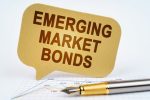Ready or not, the world is in the middle of a transition away from carbon-intensive energy sources towards cleaner alternatives. As the transition continues, there will be significant opportunities for long-term investors who get ahead of the economic, fiscal, and regulatory support around the world.
In the upcoming webcast, Get Ahead of the Curve: How to Invest in the Green Energy Transition, VanEck’s Shawn Reynolds, portfolio manager, and Charles Cameron, deputy portfolio manager, hard assets, will discuss how financial advisors can best position their client portfolios for the energy transition and so-called “greenflation” that will come with the increased adoption of renewable energy technologies.
For example, the recently launched VanEck Green Metals ETF (GMET) provides comprehensive global exposure to the producers, refiners, processors, and recyclers of the green metals that are essential to the world’s ongoing transition to a low-carbon economy.
GMET seeks to track as closely as possible, before fees and expenses, the price and yield performance of the MVIS Global Clean-Tech Metals Index (MVGMETTR), a rules-based index offering exposure to companies involved in the production, refining, processing, and recycling of metals used in applications, products, and processes that enable the energy transition.
The VanEck Future of Food ETF (YUMY), an actively managed ETF, can also provide exposure to companies engaged in agri-food technology and innovation. The growing global population and the concurrent threats from climate change are driving the need for more sustainable agri-food processes and technologies in order to provide for a future with more affordable, nutritious, and safe food for all.
The VanEck Future of Food ETF seeks long-term capital appreciation by investing in companies engaged in agri-food technology and innovation, which encompasses industries and companies that are leading, enabling, supplying, disrupting, or benefiting from new environmentally sustainable agriculture and food products and services.
Additionally, the VanEck Vectors Low Carbon Energy ETF (SMOG) is among the exchange traded funds that could benefit from the transition to a low-carbon energy future.
SMOG’s index is relevant to investors because it’s broad and can include, but isn’t limited to, bio-fuel, hydrogen, solar, and wind companies, as well as lithium-ion batteries, electric vehicles, and related equipment and smart grid firms, according to VanEck. In other words, SMOG has the depth with which investors can capitalize on what are expected to be substantial climate-related investments in the coming years. That spending will be necessary.
Financial advisors who are interested in learning more about the green energy transition can register for the Thursday, February 17 webcast here.







